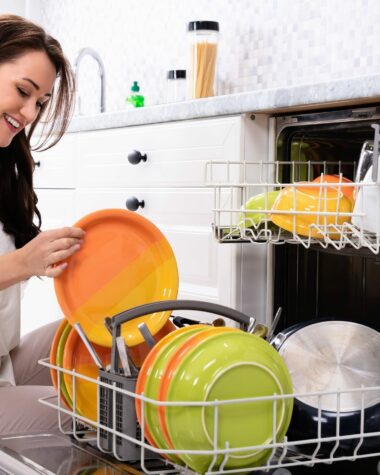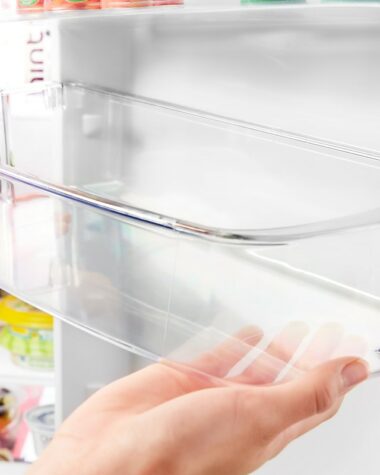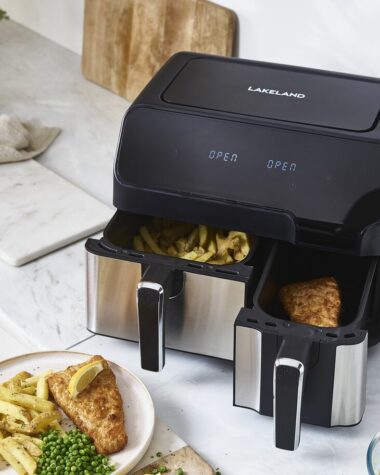Defrosting is one of those home chores that most people probably do not even consider often, but it is essential to keeping your refrigerator in optimal condition. Refrigerators are usually overpopulated with foods and beverages, so they should be checked and maintained continuously.
While many refrigerator models like Samsung have self-defrost, frost can collect ice and should be cleaned on a regular basis to eliminate any unpleasant odors and sort the mysterious objects that have sat in the freezer for too long.
Defrosting and maintaining a refrigerator will ensure it operates well, giving you more space, preserving food, and reducing energy expenses. Learn how to safely and quickly defrost the freezer of your pal refrigerator, as we here at DaDongNY provide you with these step-by-step tutorials and how you can prevent ice build-up in your refrigerator.
But First, Why Should You Defrost Your Fridge’s Freezer In The First Place?
In contrast to frost-free refrigerator models, standard fridge freezers must always be regularly defrosted. It may not be a particularly enjoyable chore, but it is important.
And if you’ve been having some problems with your refrigerator, it’s possible that the problem isn’t mechanical. Your fridge’s freezer is probably being loaded with much more ice than food would not function properly, which is why defrosting is necessary. Defrosting your refrigerator freezer can also improve efficiency since big ice blocks can reduce the appliance’s capacity to keep your food at a set temperature.
Defrosting Your Freezer: Dos And Don’ts
Is your ice cream forming an igloo within your refrigerator, or should it be defrosted? Learn the do’s and don’ts of defrosting your refrigerator before you bring out your ice pick for a fast, clean, and safe defrosting job.
Do’s
- Do plan ahead of time because the entire defrosting process could take several hours, and chilled food should be stored in a chilled cooler.
- Do multitask and use the freezer removal to rummage through the refrigerator’s contents.
- Do switch off your refrigerator before defrosting it to conserve electricity and hasten to thaw your appliance.
- Do bring a bowl of hot boiling water and place it inside your freezer. To speed up the defrosting process, reboil the water every fifteen minutes.
- Do have an old rag or newspaper on hand to soak up the melted ice in the refrigerator, particularly the freezer compartment. A narrow pan that can handle a tiny amount of water is preferable.
- Do clean the interior of the unit with a soap and water solution before washing and drying it once it has been defrosted.
Don’ts
- Don’t use an ice pick, knife, or any other sharp object to break through the ice to prevent breaking the unit. Instead, use a silicone spatula to scrape the accumulated ice in your refrigerator.
- Don’t be reckless with electricity if you’re planning to use a blow dryer to heat the freezer compartment of your freezer. Remember that stepping in a pool of water or allowing the appliance to come into contact with melting ice could result in an electric shock.
- Remember to clean down the seals on your refrigerator door, as they’re a common and filthy spot for bits of food to become entangled.
- Be sure to shut the door with all the ice accumulated in your freezer to solve the ice accumulation. Otherwise, your freezer will have to put more effort into cooling your food, wasting energy as well as raising your utility expenses.
How to Defrost Your Refrigerator’s Freezer in 8 Easy Steps
Before You Begin
Although the procedures for defrosting your refrigerator’s freezer compartment are often identical from different models, it’s important to review your refrigerator’s instruction manual before you start to ensure that you’re paying attention to all important instructions.
Your equipment’s instruction manual is also a wonderful way to find out how often you should defrost your freezer compartment. It’s usually either once or twice a year, but the manual will tell you for sure for your specific model.
What You’ll Need For A Refrigerator To Defrost
- Bowl of hot water
- Rubbing alcohol
- Hair dryer
- Wet/Dry vacuum cleaner
- Cleaning supplies
- Portable cooler
- Ice packs
- Absorbent cloths
Step #1: Get Your Refrigerator Ready
To begin, unplug your refrigerator and place all the food and beverages in a portable cooler with ice packs. After that, remove your refrigerator’s components, including the shelves, drawers, and bins. Lastly, cover the floor with absorbent cloths to soak up all possible melted ice during defrosting.
It is also recommended to take advantage of this opportunity to dispose of any expired food leftovers that can cause contamination.
Step #2: Wait For Your Refrigerator To Defrost
Every refrigerator model is different from one other, as is the quantity of ice that builds up over time. As a result, you may need to use several techniques to hasten the defrosting process.
Defrosting can take a few hours, but the length depends on how deep the frost is. You can take a seat and wait until it starts to defrost. Check it a few times in order to eliminate any excess moisture. This process can be lengthy, so you can use the tools you have on hand to thaw it faster.
Step #3: Use A Bowl Of Boiling Water
If you don’t want to sit around and wait for the defrosting procedure to finish, get a bowl of boiling water, then place the hot water on top of an absorbent cloth.
Simultaneously, heat another pot of water by replacing the bowl inside the freezer compartment with the new one every fifteen minutes.
You’ll keep changing the pot of hot water every 30 minutes to speed up the process. Repeat this process until all of the ice accumulation inside has melted.
Step #4: To Defrost More Quickly, Use Rubbing Alcohol
Saturate a clean cloth with rubbing alcohol and hot water solution and begin dabbing the ice that has accumulated in your freezer and gradually scraping the ice off. Because rubbing alcohol has a lower freezing point than water, it can assist in speeding up the defrosting.
If you have a spot in your freezer with a lot of built-up ice, you can place this cloth over it.
Step #5: Make Use Of A Table Fan Or A Hair Dryer
Use a hair dryer to blast into your fridge and freezer compartment to increase airflow. Check on the process every twenty to thirty minutes so that you can use the absorbent cloth to mop up any melted ice.
Keep in mind that using a hair dryer will need more of your attention. Hold the hair dryer and point it towards the thick layers of accumulated ice until they melt.
Additionally, to avoid electrical shock, ensure your hands are completely dry before using the hair dryer.
Step #6: Use A Wet/Dry Vacuum Cleaner
A wet and dry vacuum can assist you in defrosting your refrigerator and absorb up unwanted dissolved ice.
Step #7: Clean, Disinfect, And Dry Your Refrigerator
After you are satisfied with the manner in which your refrigerator or freezer has been defrosted, start cleaning and disinfecting it extensively.
Here are some ideas you might want to follow:
- Use a solution of soap, hot water, and baking powder to rinse off the inside of your refrigerator using a sponge.
- After wiping off the interior, dry it completely with a microfiber cloth.
- All the shelves, drawers, and storage containers you removed should also be cleaned, disinfected, and cleaned with an antibacterial solution.
Step #8: Inspect Your Refrigerator
Finally, examine the refrigerator’s seal. By ensuring the seal is intact, you can keep the air within and maintain the proper temperature for your meal.
If your seal is intact, reconnect your fridge to the wall unit and restock your food once it has cooled.
Most contemporary refrigerators include self-defrost functions that may detect frost accumulation instantly. But still, understanding how to manually thaw your refrigerator is an important skill to have on hand in the event that your appliance stops operating for some unknown reason.
How Frequently Should Your Freezer Be Defrosted?
You are advised to defrost your freezer once a year, regardless of whether you have Whirlpool, Miele, or any of the most trusted refrigerator brands. Please do remember to unplug your refrigerator before you start the defrosting process. This is an important precautionary measure that should be considered.
Additionally, you have to make sure that all foods and beverages inside are removed from the refrigerator and that your floor is secured with a plastic shower curtain. To help absorb moisture, use a rag or an old washcloth on the bottom shelf of the freezer. If you are capable of moving your freezer outside, you will have less mess to clean up once it has been defrosted.
How to Keep the Ice from Building Up in Your Freezer
- Use A De-Icer Spray
If you have an ice build-up, one of the simplest ways to remove it aside from defrosting is with a De-Icer spray.
You can spray the remover within, and it should brush the ice build-up away. It’s much better if you can prevent the accumulation of ice in the first place, which the remainder of these recommendations will assist you in doing.
- Reduce The Regularity With Which You Open Your Freezer
It’s also a good idea to open the refrigerator door less often. The reason is that each moment you open the door, warm air enters, causing humidity, which might also result in more ice accumulation inside.
The best solution to limit the number of times you open the door is to properly organize your food so that you can quickly find what you’re looking for and close the door fast.
- Make Sure That The Freezer Gasket Is Airtight
To ensure that your refrigerator door closes correctly, make sure the gaskets on the door are sealed tightly. Cold air could escape when the refrigerator door does not close correctly, and ice build-up ensues.
The simplest way to solve this is to determine if there is an issue with your refrigerator by opening it up and checking for cold air blowing around it. If not, this is evidence that the gasket isn’t tightly sealed. In this case, the door gasket will need to be replaced or repaired.
The most typical reason the gasket isn’t airtight is the positioning of frozen foods in the freezer.
Related Article: How Tos: Remove A Refrigerator Door Like A Pro (Guide)
- Remove The Gasket
As stated above, ice can accumulate in your freezer if the door seal fails to close properly. To avoid this problem, the gasket must be cleaned on a regular basis.
The gasket could be cleaned with hot and soapy water or with water and baking soda solution. Make sure you clean every single one of the tough corners of the gasket. After cleaning the gasket, ensure it is dry before closing the refrigerator door.
- Do Not Overfill Your Freezer
Another step to prevent any ice build-up in your freezer is to avoid overloading it. An overflow of ice can accumulate in your freezer if it is overcrowded with food; the same is true if it is understocked.
This is due to the fact that the harder your freezer has to work to maintain the optimum temperature, the further it will have an excess of air moving through it, which could lead to more ice. Keep around 3 pounds of food for each cubic foot of freezer space to avoid difficulties.
- Reduce The Temperature Of Your Food
Never put hot meals inside your freezer until it has cooled down in order to prevent ice build-up. This is also critical for food safety. When you place hot food in your freezer, it creates humidity, which can contribute to the creation of ice build-ups.
- Set The Appropriate Temperature
Check whether the freezer compartment is set to the right temperature. Occasionally people just put it to the lowest temperature possible, which needs to be corrected and may cause your refrigerator to fill up with ice, causing your food to spoil.
You should set your freezer to 0 °C or -18 °C. If you have a thermometer, you may check the temperature with it to be extra sure. Be careful to check the temperature occasionally to make sure it is set at the proper level.
- Keep The Drain Clear
The drain in your freezer might get clogged or frozen over time, resulting in an overflow of water underneath your freezer compartment that can freeze. Pouring hot water down the drain is the simplest way to unclog it. If loose material is blocking it, you may clamp it in place with a wire or cable.
Related Article: No Fuss, No Muss: A Quick And Easy Way On How To Unclog Refrigerator Drain For All Of Us
- Clean Your Freezer On A Regular Basis
Lastly, wipe out your freezer every couple of months. Please remove all of the food as well as other items from it, turn off the fridge as you thaw it, and then wipe it down with a cleaning spray solution. If you follow these and the other suggestions, you should be capable of preventing ice accumulation in your freezer.
Bottomline
We hope that by sharing this post, we can assist you with how to manually defrost your fridge and use it to its maximum capacity before you decide to purchase a new one. We don’t recommend shopping for a brand-new refrigerator just because your old pal has become clogged with ice. It would be a tremendous waste of money, especially if your refrigerator still has any life in it.
But, if you have to defrost your refrigerator regularly, consider switching from the more labor-intensive type. Most brand-new refrigerator models are either frost-free or have a self-defrost feature, which could be a great option. With that, you can use the defrost feature to remove frost and moisture before it becomes a major concern.
In addition to giving you more time to take care of the rest of your house, your refrigerator should operate considerably more efficiently, compensating itself over time through energy savings.
To learn more about refrigerators and how this valuable piece of equipment chills the food and beverages inside, check out the post here.
Articles You May Be Interested In
- A Cooler Choice: Whirlpool v.s GE Refrigerators (Full Guide)
- Refrigerator Check: LG v.s Samsung Refrigerators (Full Guide)
- Cool Tech Showdown: Frigidaire v.s Whirlpool Refrigerators (Full Guide)
- Fridge Favorites: Bosch v.s LG Refrigerators (Full Guide)
- Cooling Conundrum: Whirlpool v.s Samsung Refrigerators (Full Guide)
- Tale Of The Tape: Maytag v.s Whirlpool Refrigerators (Full Guide)
- Fridges in Focus: Thermador v.s Sub-Zero Refrigerators (Full Guide)
- Fridge Frenzy: Sub-Zero v.s Viking Refrigerators (Full Guide)
- The Big Chill: Whirlpool v.s KitchenAid Refrigerators (Full Guide)
- Refrigerator Bout: Whirlpool v.s LG Refrigerators (Full Guide)









